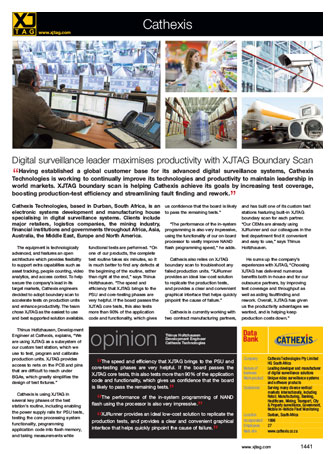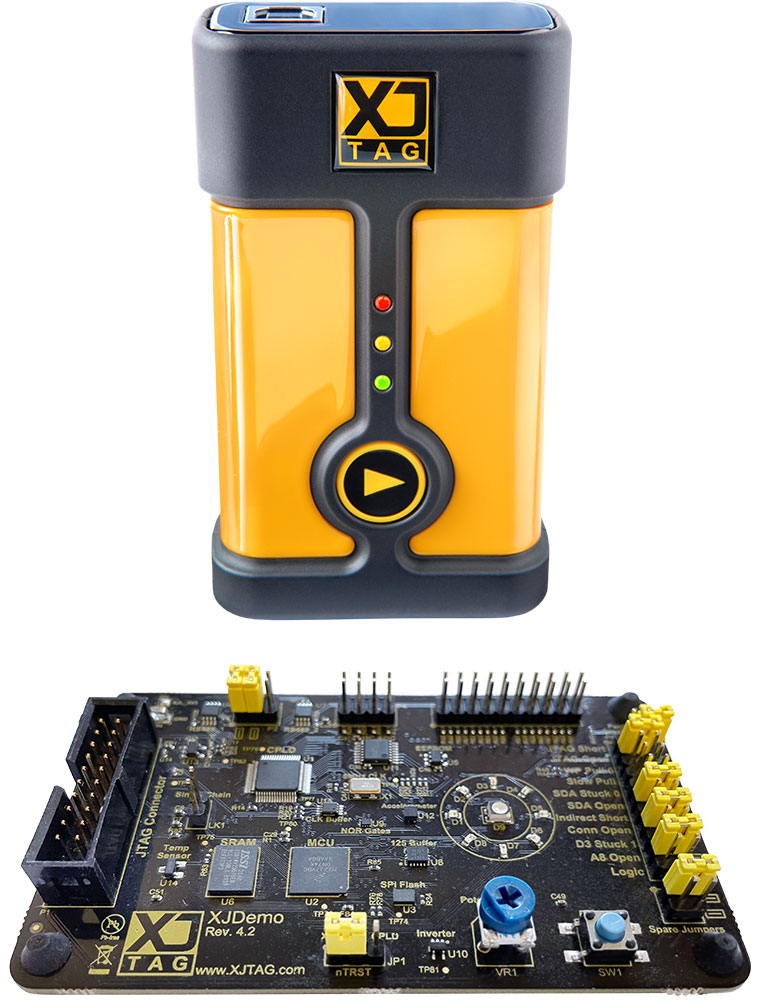
Digital surveillance leader maximises productivity with XJTAG boundary scan
Having established a global customer base for its advanced digital surveillance systems, Cathexis Technologies is working to continually improve its technologies and productivity to maintain leadership in world markets. XJTAG boundary scan is helping Cathexis achieve its goals by increasing test coverage, boosting production-test efficiency and streamlining fault-finding and rework.
Cathexis Technologies, based in Durban, South Africa, is an electronic systems development and manufacturing house specialising in digital surveillance systems. Clients include major retailers, logistics companies, the mining industry, financial institutions and governments throughout Africa, Asia, Australia, the Middle East, Europe and North America.
The equipment is technologically advanced, and features an open architecture which provides flexibility to support extra capabilities such as asset tracking, people counting, video analytics, and access control. To help secure the company’s lead in its target markets, Cathexis engineers decided to adopt boundary scan to accelerate tests on production units and enhance productivity. The team chose XJTAG as the easiest to use and best supported solution available.
Thinus Holtzhausen, Development Engineer at Cathexis, explains, “We are using XJTAG as a subsystem of our custom test station, which we use to test, program and calibrate production units. XJTAG provides access to nets on the PCB and pins that are difficult to reach under BGAs, which greatly simplifies the design of test fixtures”.
Cathexis is using XJTAG in several key phases of the test station’s routine, including enabling the power supply rails for PSU tests, testing the core processing system functionality, programming application code into flash memory, and taking measurements while functional tests are performed. “On one of our products, the complete test routine takes six minutes, so it is much better to find any defects at the beginning of the routine, rather than right at the end”, says Thinus Holtzhausen. “The speed and efficiency that XJTAG brings to the PSU and core-testing phases are very helpful. If the board passes the XJTAG core tests, this also tests more than 90% of the application code and functionality, which gives us confidence that the board is likely to pass the remaining tests.”
“The performance of the in-system programming is also very impressive, using the functionality of our on-board processor to vastly improve NAND flash programming speed”, he adds.
Cathexis also relies on XJTAG boundary scan to troubleshoot any failed production units. “XJRunner provides an ideal low-cost solution to replicate the production tests, and provides a clear and convenient graphical interface that helps quickly pinpoint the cause of failure.”
Cathexis is currently working with two contract manufacturing partners, and has built one of its custom test stations featuring built-in XJTAG boundary scan for each partner. “Our CEMs are already using XJRunner and our colleagues in the test department find it convenient and easy to use”, says Thinus Holtzhausen.
He sums up the company’s experiences with XJTAG, “Choosing XJTAG has delivered numerous benefits both in-house and for our outsource partners, by improving test coverage and throughput as well as aiding faultfinding and rework. Overall, XJTAG has given us the productivity advantages we wanted, and is helping keep production costs down”.

The speed and efficiency that XJTAG brings to the PSU and core-testing phases are very helpful. If the board passes the XJTAG core tests, this also tests more than 90% of the application code and functionality, which gives us confidence that the board is likely to pass the remaining tests.
The performance of the in-system programming of NAND flash using the processor is also very impressive.
XJRunner provides an ideal low-cost solution to replicate the production tests, and provides a clear and convenient graphical interface that helps quickly pinpoint the cause of failure.

Company: Cathexis Technologies Pty Limited. HQ South Africa
Nature of business:
Leading developer and manufacturer of digital surveillance solutions
Main product:
Unique video surveillance systems and software products
Customers:
Serving many diverse vertical markets internationally, including Retail, Manufacturing, Banking, Healthcare, Mining, Transport, City & Property surveillance, Government, Mobile In-Vehicle Fleet Monitoring
Location: Durban, South Africa
Incorporated: 1996
Employees: 27
Web site: www.cathexis.co.za

Configure your products














